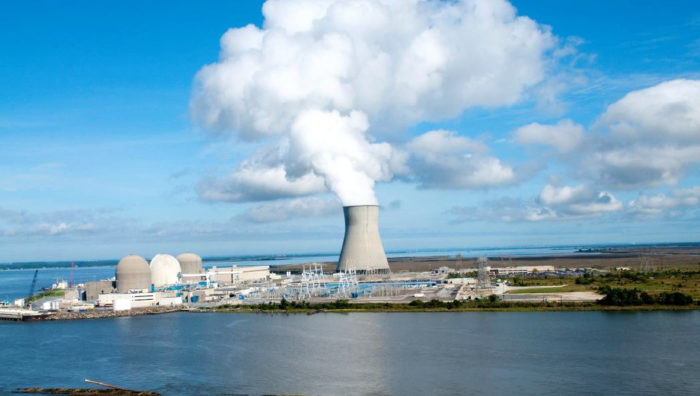Why nuclear and fusion accelerate our problems, and point to the solution
It’s tempting to look at fossil fuels and global warming and conclude: a fuel that didn’t release greenhouse gases would solve our problems. Then we look at nuclear plants whose fuels are uranium and other elements. Splitting them doesn’t release greenhouse gases. They look like improvements. Why not switch to nuclear?
The switch looks yet better when you consider other problems with fossil fuels. They release more than greenhouse gases: mercury and other poisons. We turn them into plastics, which make their way into our foods and bloodstreams. Mining and extracting them displaces people (and wildlife) from their land, leads to spills like the Exxon Valdez and BP Deepwater Horizon. Internal combustion engines produce most noise pollution. Politically, the concentration of power leads globally to infiltration of government and corruption. The list goes on.
But then, in fairness, nuclear has its problems. For a long time, radioactive waste seemed big, but fossil fuels turn out to release a lot of radioactivity, so nuclear wasn’t worse, but also new designs reduce the radioactive waste. There are the risks of terrorism, meltdowns, and mining and extracting the fuels displacing people (and wildlife) too. Let’s say we solved all these engineering issues and we create nuclear reactors that can produce electricity without pollution.

Another big issue is the greenhouse gases necessary to build the reactors. It sounds like it should be minor, but they’re major investments and require a lot of some things we have zero hope of electrifying. We rely on fossil fuels for trucking over a couple hundred miles, heavy machinery, shipping, and creating computer chips (also flying farther than a few hundred miles, but nuclear plants don’t require it, so just an aside here). So in practice, nuclear still requires fossil fuels. Also, in practice, mining wrecks local environments, which we show no signs of stopping, and radioactive waste problems don’t go away.
(Solar and wind rely on fossil fuels too, at every step: to manufacture, transport, and install. Plus we have to replace them regularly, which leads to pollution in taking down and transporting the old ones. They contain lots of plastic, fiberglass, and toxins that add up to global problems.)
Then we reach fusion. Its fuel is hydrogen and waste is helium, which isn’t poisonous, and the amounts we’d produce are small anyway. We don’t need to mine hydrogen, it’s everywhere. Let’s say the reactors would last so long, the fossil fuels necessary to build them become negligible.
Problem solved, right?

You may know fusion powers the sun. Global warming results from trapping too much of the sun’s energy within our atmosphere, which become heat. Putting a bit of sun within our atmosphere puts a source of heat within our atmosphere. Do we have to worry about accelerating global warming?
The sun is huge, though far away, and any fusion plant we’d create would be small, so wouldn’t be a problem. Except for one thing: exponential growth of our economy, which would lead to exponential growth of need for power and therefore of fusion plants and therefore heat.
It’s tempting to think, hopefully, “but that’s not a problem for a long time.” But humans can’t develop intuitions on exponential growth, even mathematicians and scientists who work with them. We have to do the math. A recent peer-reviewed paper in Nature did so, Limits to Economic Growth. It turns out that with economic growth under 3% annual, heat from fusion reactors would heat the surface of the Earth to water’s boiling point within a few human lifetimes, though obviously it would have stopped us long before.
It’s then tempting to think, with all the energy fusion gave us along the way, surely we’d find a way to beam the energy off to space or some solution like that. But we can’t, that’s the problem of global warming. We have no way to get heat out of our atmosphere. It’s not an engineering issue, it’s a laws of thermodynamics issue.
Then you might say, “we’ll just stop growing before the temperatures get too high.” And then you might reflect and realize that solution would solve our problems today and the root of our problem. We kept growing to where we are lowering Earth’s ability to sustain life. We can try to engineer around many of them, but ultimately they always exist. It’s fun to watch Star Wars and Star Trek and imagine anti-gravity devices, dilithium crystals, and tractor beams, but they only exist in fiction. If you think we shouldn’t limit our imaginations, people a hundred years ago couldn’t have dreamed of today’s technology, then why not imagine a healthy, productive economy with happy, healthy people living to ripe old ages without growing the economy or population? We don’t have to imagine it. We can just look in history and anthropology books. Plenty of human societies did so. Our society that depends on perpetual growth defeated and extirpated many of them, but a society defeating another doesn’t mean the people in it are happier or healthier.
Why do we have an easier time imagining defeating laws of physics that have never seen the slightest hint of violation than implementing economics that have actually been done?
The overheating problem doesn’t depend on fusion, by the way. If we grow economically forever, any source of energy would overheat Earth beyond livable within a few generations, as if our slight heating so far isn’t problem enough.
The Solution We Always Reach
If we can stop growing ever, we can stop growing now. We have to learn to stop growing, or rather re-learn, as most of our ancestors did.
Read my weekly newsletter

On initiative, leadership, the environment, and burpees